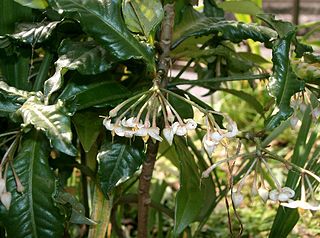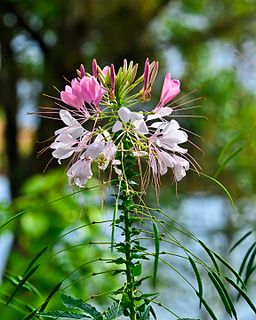
Manilkara zapota, commonly known as sapodilla, sapota, chikoo, chico, naseberry, or nispero is a long-lived, evergreen tree native to southern Mexico, Central America and the Caribbean. An example natural occurrence is in coastal Yucatán in the Petenes mangroves ecoregion, where it is a subdominant plant species. It was introduced to the Philippines during Spanish colonization. It is grown in large quantities in India, Pakistan, Thailand, Malaysia, Cambodia, Indonesia, Vietnam, Bangladesh and Mexico.

Sebastiania is a genus of flowering plants in the family Euphorbiaceae first described in 1821. It is native to North and South America from Arizona and the West Indies south to Uruguay.

Ardisia is a genus of flowering plants in the family Primulaceae. It was in the former Myrsinaceae family now recognised as the myrsine sub-family Myrsinoideae. They are distributed in the Americas, Asia, Australia, and the Pacific Islands, mainly in the tropics. There are over 700 accepted species. One species, Ardisia japonica is one of the 50 fundamental herbs in traditional Chinese medicine.

Cleome is a genus of flowering plants in the family Cleomaceae, commonly known as spider flowers, spider plants, spider weeds, or bee plants. Previously, it had been placed in the family Capparaceae, until DNA studies found the Cleomaceae genera to be more closely related to the Brassicaceae than the Capparaceae. Cleome and clammyweed, can sometimes be confused. The simplest way to differentiate the two is to compare the seedpods which project out or down on cleome and up on clammyweed.

Sideroxylon is a genus of trees in the family Sapotaceae described as a genus by Linnaeus in 1753. They are collectively known as bully trees. The generic name is derived from the Greek words σιδηρος (sideros), meaning "iron", and ξύλον (xylon), meaning "wood."

Neea is a genus of plants in family Nyctaginaceae from the Caribbean region, Central and South America. Members of the genus are commonly called Nia, Neea, or saltwood. The genus was named by botanists José Pavón and Hipólito Ruiz in honor of Luis Née, a botanist on the Malaspina Expedition.

Galactia is a genus of flowering plants in the legume family (Fabaceae). It belongs to the subfamily Faboideae. They do not have an unambiguous common name, being commonly called "milk peas", "beach peas" or "wild peas".
Dilophotriche is a genus of West African plants in the grass family.

Metopium or poisonwood is a genus of flowering plants in the sumac family, Anacardiaceae.

Crossopetalum, commonly known as Christmas-berries or maiden berries, is a genus of flowering plants in the family Celastraceae. It comprises about 30-40 species.
Morisonia is a genus of flowering plants in the family Capparaceae, found across the Americas from the United States to Argentina. It was recently enlarged with New World Capparis species due to existing taxonomic instability. They tend to be shrubs or small trees.
Myrciaria ibarrae, commonly known as Guayabillo in Guatemala, is a species of plant in the family Myrtaceae. First described in 1961, it is a tree which grows to between 8 and 10 metres tall, and is endemic to south-east Mexico and Guatemala.
Antherotoma is a genus of flowering plants belonging to the family Melastomataceae.
Ctenardisia is a genus of flowering plants belonging to the family Primulaceae.
Hymenandra is a genus of flowering plants belonging to the family Primulaceae.
Mortoniodendron is a genus of flowering plants belonging to the family Malvaceae.
Plenckia is a genus of flowering plants belonging to the family Celastraceae.
Dicellandra is a genus of flowering plants belonging to the family Melastomataceae.
Rousseauxia is a genus of flowering plants belonging to the family Melastomataceae.
Orthion is a genus of flowering plants belonging to the family Violaceae.








